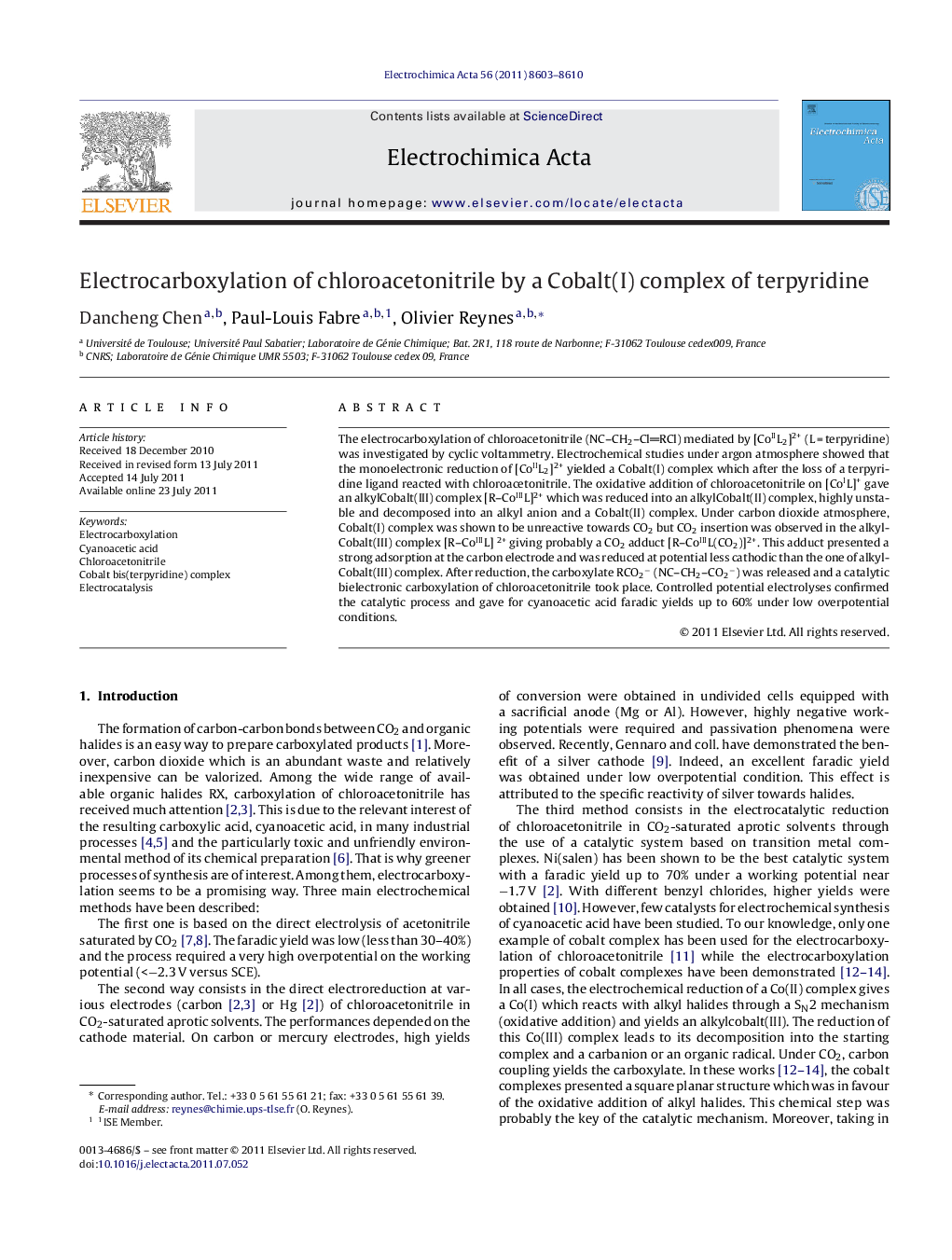| Article ID | Journal | Published Year | Pages | File Type |
|---|---|---|---|---|
| 189240 | Electrochimica Acta | 2011 | 8 Pages |
The electrocarboxylation of chloroacetonitrile (NC–CH2–ClRCl) mediated by [CoIIL2]2+ (L = terpyridine) was investigated by cyclic voltammetry. Electrochemical studies under argon atmosphere showed that the monoelectronic reduction of [CoIIL2]2+ yielded a Cobalt(I) complex which after the loss of a terpyridine ligand reacted with chloroacetonitrile. The oxidative addition of chloroacetonitrile on [CoIL]+ gave an alkylCobalt(III) complex [R–CoIIIL]2+ which was reduced into an alkylCobalt(II) complex, highly unstable and decomposed into an alkyl anion and a Cobalt(II) complex. Under carbon dioxide atmosphere, Cobalt(I) complex was shown to be unreactive towards CO2 but CO2 insertion was observed in the alkylCobalt(III) complex [R–CoIIIL] 2+ giving probably a CO2 adduct [R–CoIIIL(CO2)]2+. This adduct presented a strong adsorption at the carbon electrode and was reduced at potential less cathodic than the one of alkylCobalt(III) complex. After reduction, the carboxylate RCO2− (NC–CH2–CO2−) was released and a catalytic bielectronic carboxylation of chloroacetonitrile took place. Controlled potential electrolyses confirmed the catalytic process and gave for cyanoacetic acid faradic yields up to 60% under low overpotential conditions.
